The new parliament of Srilanka is located about ten miles east of Colombo. it was built on a twelve-acre island reclaimed from a historic diyawanna oya, an ancient waterway in Sri Jayewardenepura Kotte with the construction of massive retaining wall 3600 feet long, 6 feet high, 6 feet board at the base and tapering to one and half feet all around the island.
The building is surrounded by 300-acre Lake and it covers an area of 48000 sq m. The lake gives a moat like protection and also it enhances the serenity of the location. It was designed by the architects Mr. Geoffrey Bawa and Begg and was constructed by a Japanese consortium of two Mitsui companies over a 25.4 million U.S dollar contract. The project was completed on a scheduled time of 26 months and it was inaugurated on 29th April 1982.
CONTEXT
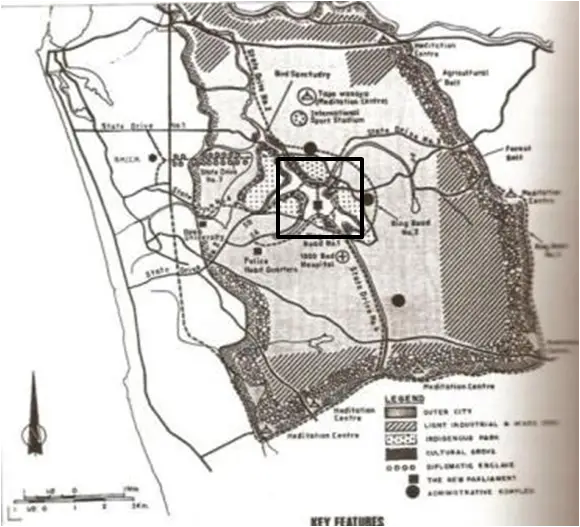
Bawa’s architecture seem relatively open to eclectic influences, yet the siting of the building revels political purpose that are far more parochial. Though the symbolic references to past traditions of relating architecture to man-made bodies of water may have remained at the heart of Bawa’s conception for the building, the choice of site, reachable only by a causeway from the surrounding land, likely had at least as much to do with security as it did with meditation on the purely formal aspects of historical precedent. Though the selection of site had much to do with the availability of inexpensive land near the capital, its significance far transcends matters of economics. Four miles outside of Colombo, Sri Jayawardhanapuram Kotte is no more suburb; it was once a fortified island redoubt and a city of major stature in pre-colonial Sri Lanka.
PLANNING
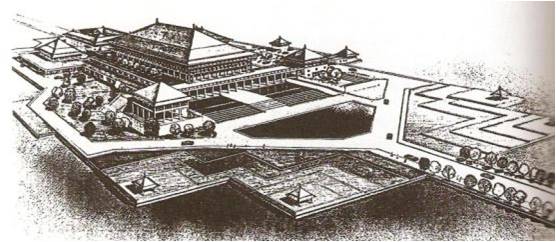

The parliament of sri lank is a simple rectilinear structure bound on all sides by water. The building, island and water make a beautiful composition emanating a sense of balance in the elements of nature and an ambience of peace and harmony. The complex connects to the neighbor through an access named the ceremonial drive and service road with drawbridge at the rear.
The ceremonial drive bifurcates into two approaches, one leading to the entrance for the members of parliament on the east and the other to the entrance for the staff on the west. The form of building was organized into a hierarchical system. The roof of the parliamentary house or the assembly hall stands tallest and high in the skay.
CONCEPT
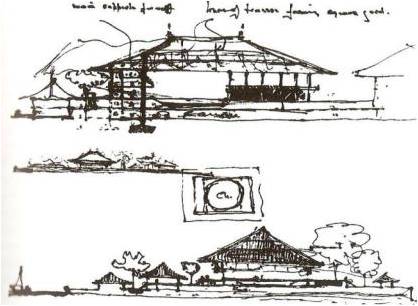
Bawa conceived of the Parliament as an island capitol surrounded by a new garden city of parks and public buildings. Its cascade of copper roofs would first be seen from the approach road at a distance of two kilometers floating above the new lake at the end of the Diyavanna valley. The design placed the main chamber in a central pavilion surrounded by a cluster of five satellite pavilions. Each pavilion is defined by its own umbrella roof of copper and seems to grow out of its own plinth, although the plinths are actually connected to form a continuous ground and first floor.
The main pavilion is symmetrical about an axis running north-south through the debating chamber, the Speaker’s chair and the formal entrance portal. But the power of this axis and the scale of the main roof are diffused by the asymmetric arrangement of the lesser pavilions around it. As a result, the pavilions each retain a separate identity but join together to create a single upward sweep of roofs. The use of copper in place of tile gives the roofs a thinness and the tent-like quality of a stretched skin alluding perhaps to the fabled ‘brazen roofs’ of Anuradhapura.
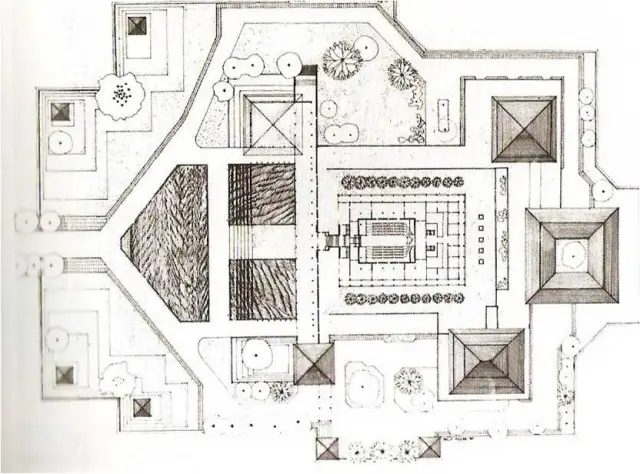
Bawa conceived of the Parliament as an island capitol surrounded by a new garden city of parks and public buildings. Its cascade of copper roofs would first be seen from the approach road at a distance of two kilometers floating above the new lake at the end of the Diyavanna valley. The design placed the main chamber in a central pavilion surrounded by a cluster of five satellite pavilions. Each pavilion is defined by its own umbrella roof of copper and seems to grow out of its own plinth, although the plinths are actually connected to form a continuous ground and first floor.
The main pavilion is symmetrical about an axis running north-south through the debating chamber, the Speaker’s chair and the formal entrance portal. But the power of this axis and the scale of the main roof are diffused by the asymmetric arrangement of the lesser pavilions around it. As a result, the pavilions each retain a separate identity but join together to create a single upward sweep of roofs. The use of copper in place of tile gives the roofs a thinness and the tent-like quality of a stretched skin alluding perhaps to the fabled ‘brazen roofs’ of Anuradhapura.
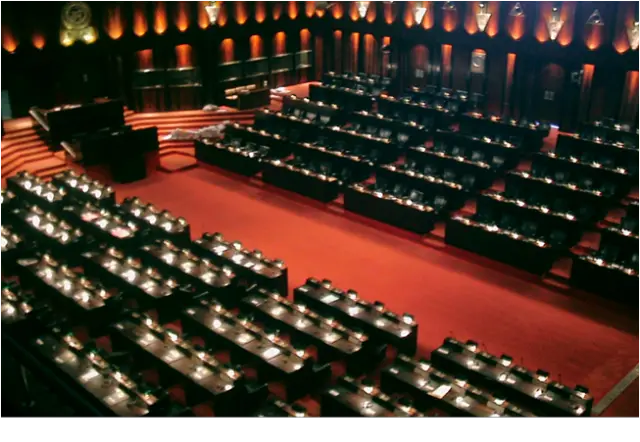
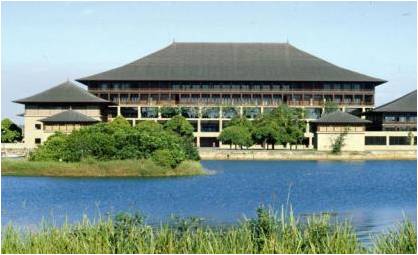
- the president
- the prime minister
- the speaker
- the ministers
- the deputy speaker and the deputy
- chairman of committees
- the attorney general
- the auditor general
- the legal draftsman
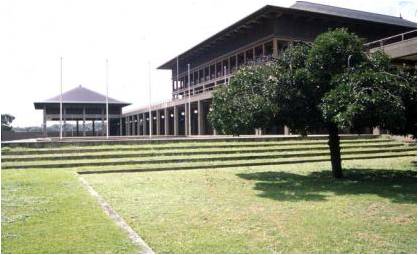
- The department of sergeant-at-arms
- The administrative department
- The hansard department: The hansard is the official printed verbatim record of the parliamentary proceedings including messages from the president, the speaker’s announcements, questions, etc. the speeches of the members of parliament are recorded in hansard in the language in which they are made.
- The coordinating engineer’s department
- The catering department
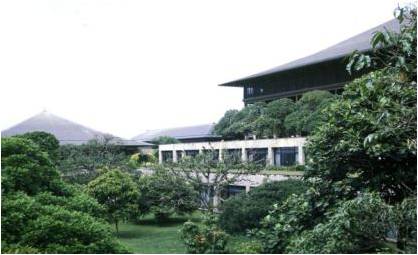
- Banks, Post office
- Dinning hall
- Medical care centre
- Cafeteria
- Canteen
- Reservation office
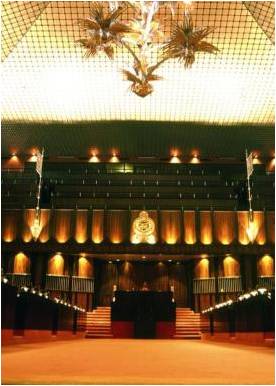

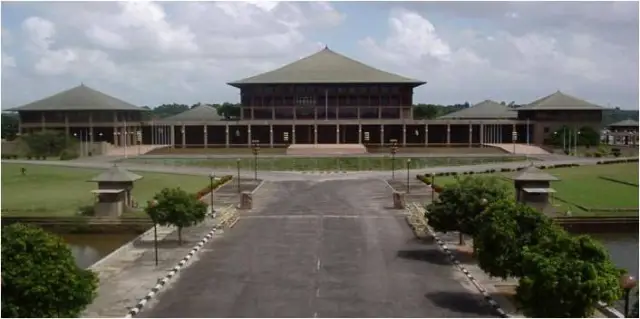
Leave a Reply
You must be logged in to post a comment.